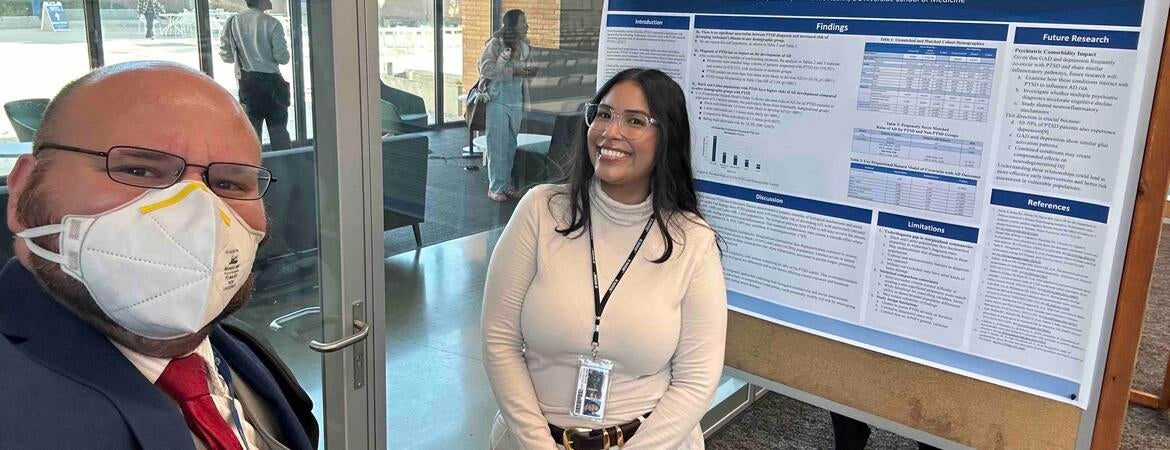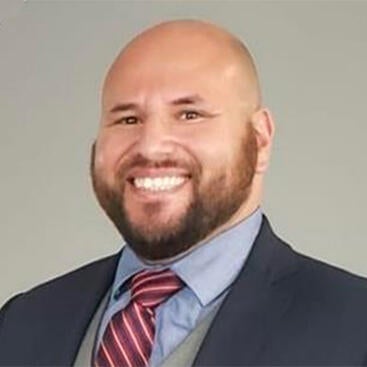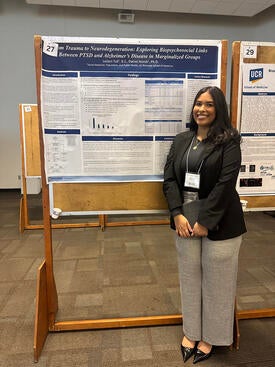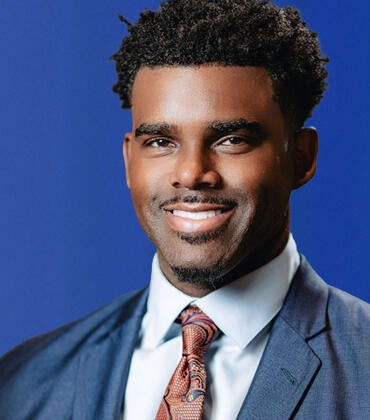
Recent student research projects at the UCR School of Medicine have investigated nationwide trends in contraceptive use, the link between blood pressure medications and pre-cancerous skin conditions, the development of Alzheimer's disease among patients with post-traumatic stress disorder (PTSD) in minority communities, and more.
The common element? The projects rely on TriNetX, a platform that provides access to extensive real-world patient data.
Reflecting nationwide issues, UCR SOM students have struggled over the years to get involved with research due to issues like the inability to obtain human subject approvals, a lack of available research mentors, and inconsistent policies, according to Daniel Novak, PhD, associate clinical professor in health sciences and director of Student Scholarly Activities at the UCR SOM.
Yet he said that the learning process behind conducting research is essential to help future physicians recognize quality research and know when to incorporate the findings into their clinical practice. It’s also crucial for new medical discoveries. “We need physicians who have done a basic research project, because the only way to learn how to do research is to do it,” he said.
Innovating to improve research education
Seeking a better way to teach medical students about conducting research, Novak came across the TriNetX platform and incorporated it into the SOM’s research curriculum in 2024, adding another facet to the school’s community-focused program.

TriNetX contributes to student research capabilities by offering de-identified patient data from health systems around the United States and the world. It’s searchable, and includes analytical and computational capabilities, allowing students to analyze research without needing large grants or data centers. “There are some limitations to using real-world data, but the pools of people you can look at are so big that it would be too expensive to recruit that many people to get that kind of scale,” Novak said.
Novak leads students through a series of structured assignments via a TriNetX-focused bootcamp and his required course in the MD program, called the Health Systems Science Project, which he created with help from a $30,000 grant from the American Medical Association’s Accelerating Change in Medical Education initiative. The accessible process allows small teams of students to conduct real, publishable research on their own projects completed over the course of their time in medical school.
“I wanted students to have this 10-step research experience that we developed, from developing an idea, forming a team, conducting a literature review, developing research questions based on a gap in that literature, conducting the analysis, writing it up, presenting it publicly at Dean's Research Day, creating a poster on it, and then taking it to conferences,” Novak explained. “TriNetX has become really key to letting all of our students get a real research experience during medical school regardless of their background in research, and we think that’s something special.”
Expanding student research opportunities through TriNetX
In addition to enabling a systematic approach to learning the research process, the UCR SOM’s use ofTriNetX in the research course also helps students overcome the barrier of finding a mentor in order to conduct research. This is particularly important for medical students from underrepresented groups, who represent 40% of SOM students and, according to multiple studies, tend to have more difficulty accessing research mentorship.
For Roy Mendoza, MD, who graduated from the SOM in 2025 and matched into the dermatology residency program at Loma Linda University, TriNetX “levels the playing field for students who might not have traditional research connections or resources.” The project he co-led, which was recently published in the Journal of the American Academy of Dermatology, analyzed data from over 150,000 patients across the country to investigate the association between the use of antihypertensive medications and the treatment rates of the precancerous skin condition actinic keratosis. “Without TriNetX, a study of this scale and diversity would have required years of data collection, significant funding, and advanced statistical support,” Mendoza said.
As someone who initially didn’t know where to begin with research when he started medical school, Mendoza now assists SOM students with brainstorming research questions, interpreting results, and moving through the writing process. “TriNetX has opened the door for students, especially first-generation students or those without research backgrounds, to engage in meaningful, real-world clinical inquiry,” Mendoza said.
Creating new mentorship opportunities
Mentorship still plays an important role in the SOM’s new research curriculum. In fact, Novak said that TriNetX can help facilitate increased collaboration by allowing students to seek mentors who can review or oversee projects that they created themselves. “That's a very different place than showing up and being like, 'Hey, can I get on your project?’” Novak explained.

Novak himself recently mentored one student, Leilani Tull, whose project used TriNetX data to determine that Latino patients with PTSD were 1.4 times more likely to develop Alzheimer’s disease while Black patients with PTSD were 1.6 times more likely, compared to other patients with PTSD.
Tull, who’s a member of the inaugural class of Master of Public Health students at the SOM, came up with the idea as a Latina herself who hopes to become a doctor serving her home community in the Inland Empire. She presented her project at several symposia, receiving an honorable mention for best poster presentation at the UCR Graduate Research Symposium and sparking conversations with other researchers and community members. “By me being able to center those voices, I think it opened the door for advocacy and for a lot of conversations surrounding next steps into helping these communities even more,” she said, furthering the SOM’s mission to serve underrepresented populations in the region. “Everyone was pretty shocked by the results…and it kicked things into gear of, something needs to be done.”
UCR SOM students also work on their own projects alongside research mentors like SOM community faculty member Edwin Kendrick, MD, a board-certified vascular surgeon and founder of California Vein Vascular and Diagnostics. A recent project in collaboration with Kendrick examined the risk of complications from endovascular procedures, finding that using ultrasounds to screen for arterial disease led to negative outcomes. Students subsequently presented the research and won awards at the National Medical Association's 2024 and 2025 conferences, and are now working on a manuscript for publication.
Kendrick stressed that in addition to developing students’ research skills, projects based on patient data like those done with TriNetX can help them understand real patient issues and apply their knowledge when treating community members. Conversely, he cautioned, understanding the unique issues in each community is also important, as they may not always be present in TriNetX data. “You get a large swath of the population, but…does it actually reflect all of society?” Kendrick said. To help students get beyond the software, his nonprofit organization, SanoHealth ARM, facilitates students from a variety of schools in getting involved with cardiovascular care in the community to experience local issues firsthand.
The future of student research
Looking ahead, Novak aims to increase community involvement with UCR research. “I'd like to see this platform allow us to become a resource for helping answer questions that our local communities have about the kinds of health issues that they're facing,” he said. “UCR is investing in medical student research and trying to get our whole community involved in doing it."
Ultimately, Novak said, the SOM’s use of TriNetX contributes to the school’s mission of creating physicians who will serve the community. “We're trying to create for our students, especially our first generation and underrepresented students, the idea of a researcher identity, where they know they can use the research skills that they develop here to help their patients in the future,” he said. “So it connects directly to our mission: to close the equity gaps that we see in medical education, and to produce people who are better able to serve the communities of the Inland Empire.”



